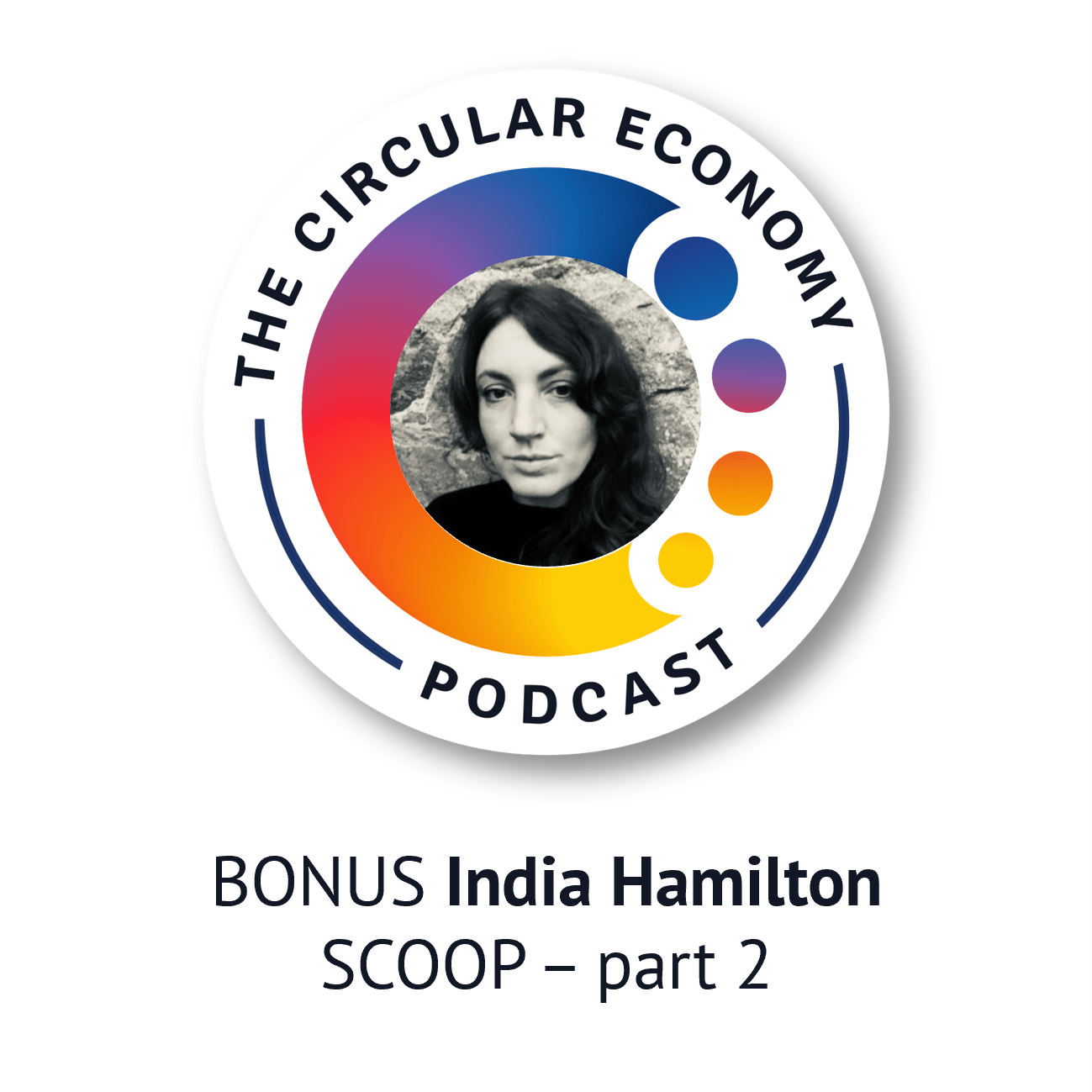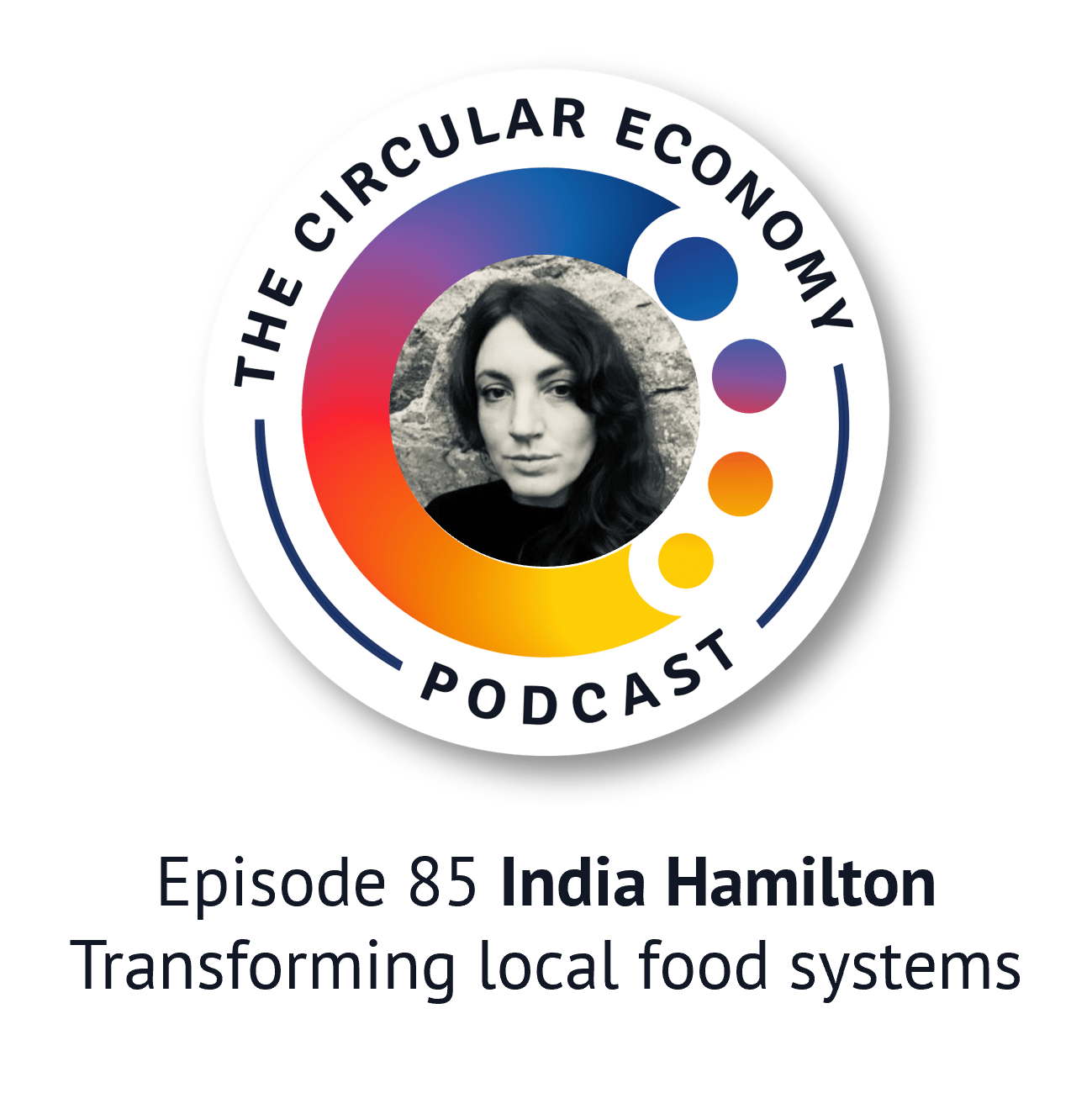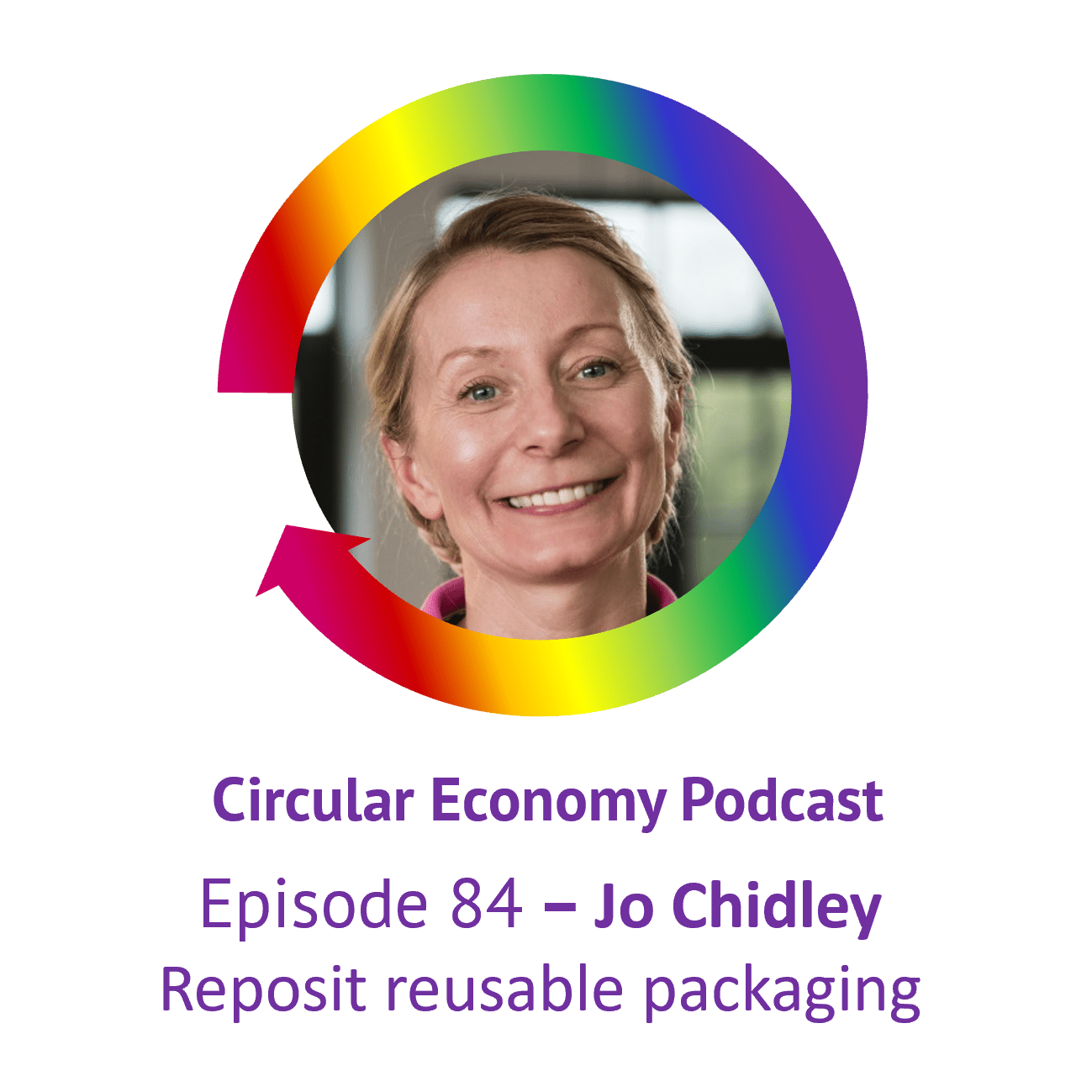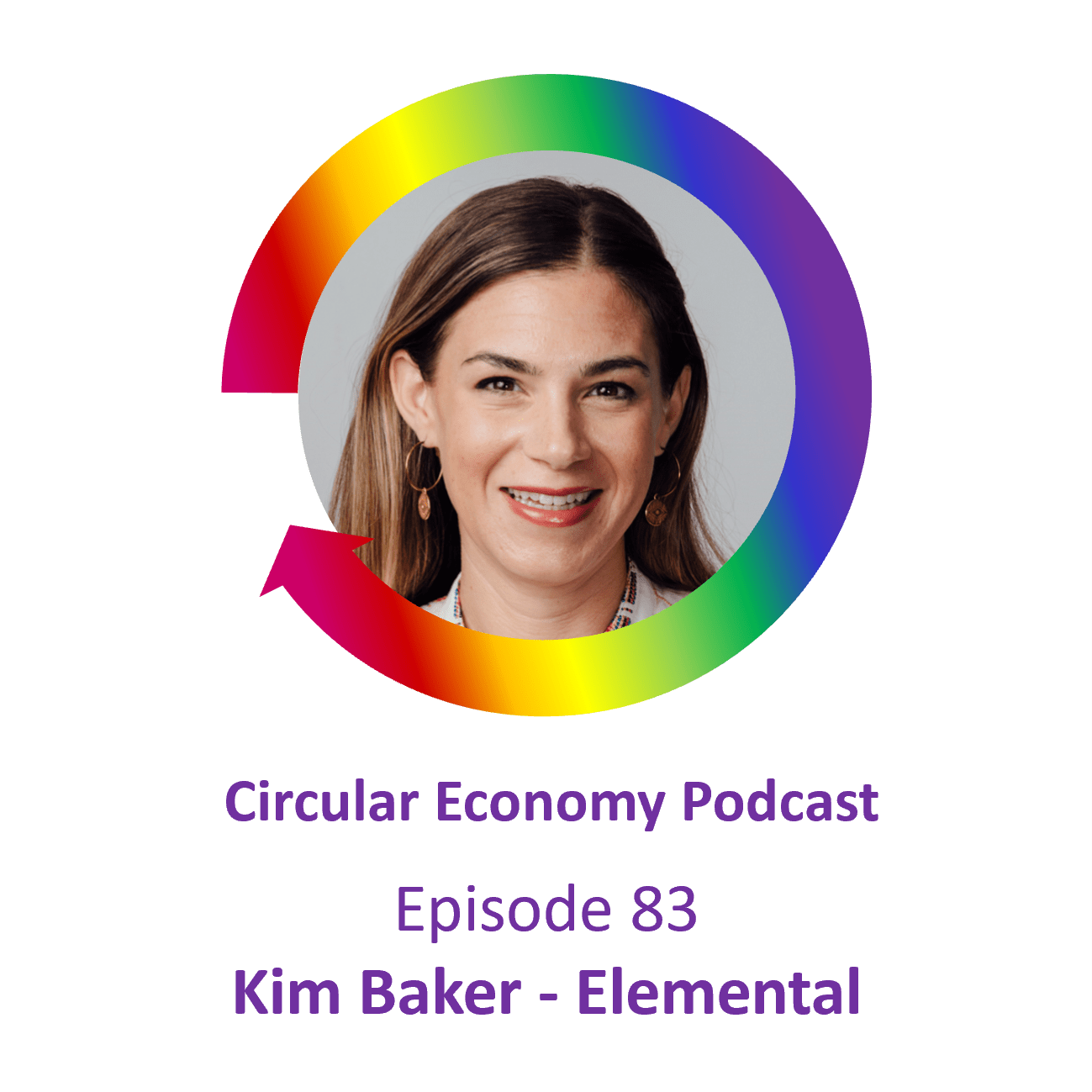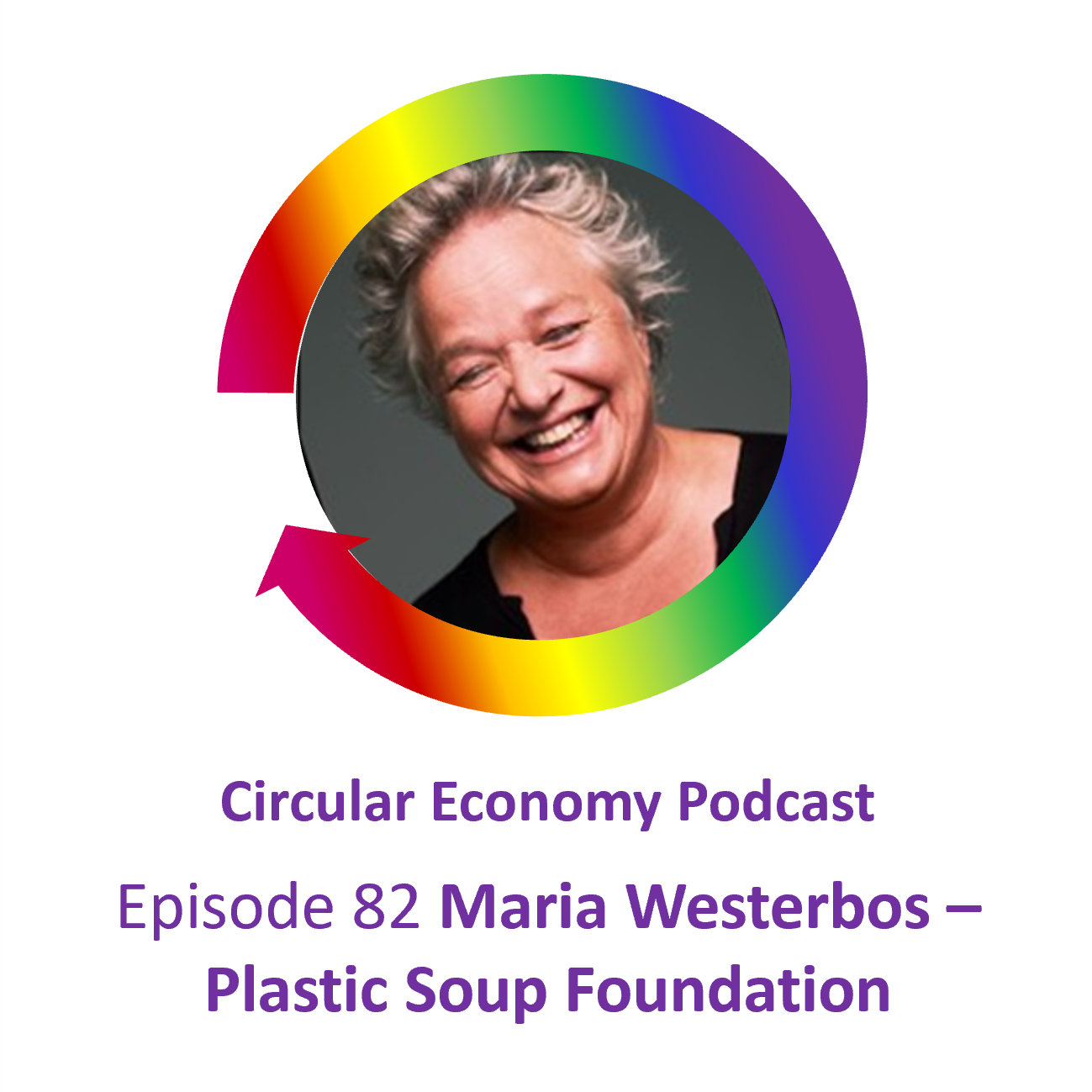Podcast: Play in new window | Download
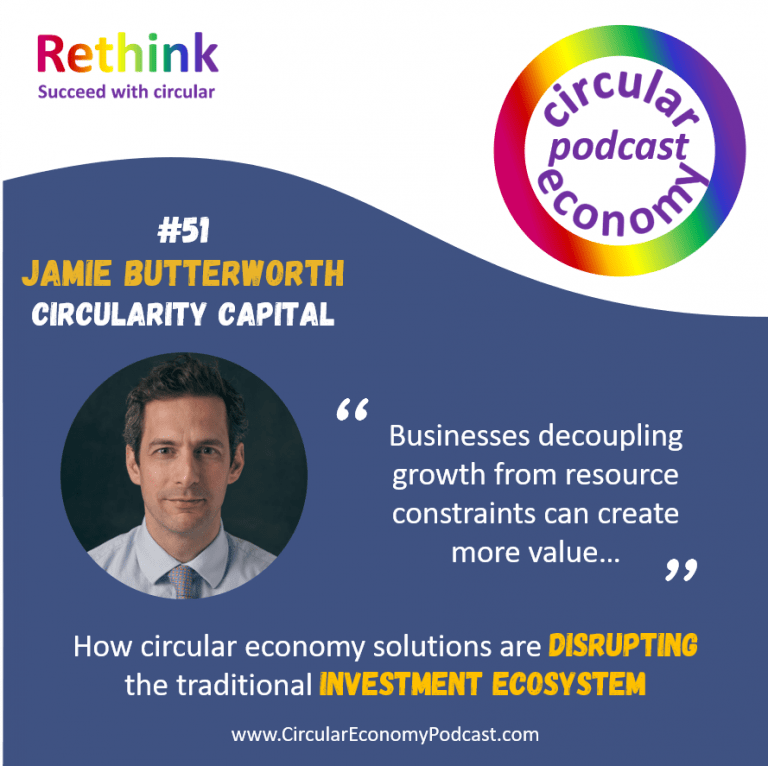
Catherine Weetman talks to Jamie Butterworth, a founder partner at Circularity Capital. Jamie and the Circularity Capital team help large investors, including financial institutions, global corporations and family offices, to invest in circular businesses which can gain competitive advantage by breaking the link between resource use and business success
Circularity Capital invests in circular businesses and startups, like Winnow, ZigZag, Shark Solutions and Grover. Jamie tells us why there is a need for specialist investment in circular businesses and what specific financial challenges those businesses have, how investors evaluate circular business models, and what is happening as more investors become aware that we’re in a race to solve the climate and biodiversity crises.
Jamie also explains Circularity Capital’s approach to working out what to invest in – through an ‘unintended consequences’ paper.
Podcast host Catherine Weetman is a circular economy business advisor, workshop facilitator, speaker and writer. Her award-winning book: A Circular Economy Handbook: How to Build a More Resilient, Competitive and Sustainable Business includes lots of practical examples and tips on getting started. Catherine founded Rethink Global in 2013, to help businesses use circular, sustainable approaches to build a better business (and a better world).
Stay in touch for free insights and updates…
Read on for a summary of the podcast and links to the people, organisations and other resources we mention.
You can subscribe to the podcast series on iTunes, Google Podcasts, PlayerFM, Spotify, TuneIn, or search for “circular economy” in your favourite podcast app. Stay in touch to get free insights and updates, direct to your inbox…
Links we mention in the episode:
- A Circular Economy Handbook: How to Build a More Resilient, Competitive and Sustainable Business – buy from any good bookseller, or direct from the publisher Kogan Page, which ships worldwide (free shipping to UK and US) and you can use discount code CIRCL20 to get 20% off: https://www.koganpage.com/CircEcon2 It’s available in paperback, ebook and on Kindle. If you buy it from online sources, make sure you choose the new edition with an orange cover!
- Jamie Butterworth https://www.linkedin.com/in/jamie-butterworth-a0a48b13/
- Circularity Capital https://circularitycapital.com/
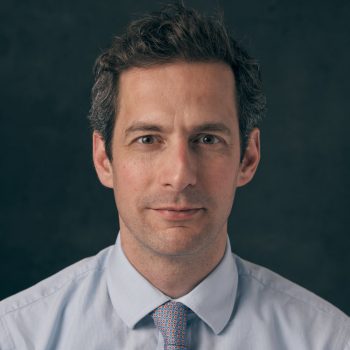 About Jamie Butterworth
About Jamie Butterworth
Jamie Butterworth is a member of the Investment Committee and part of the Investment Team at Circularity Capital, a specialist private equity firm targeting growth stage investments in business enabling the circular economy. Jamie leads Circularity Capital’s work in connecting investee management teams to new business development opportunities in the circular economy and is also head of Investor Relations.
Jamie is the former CEO and part of the founding team of the Ellen MacArthur Foundation, a global hub for circular economy innovation and has developed a deep understanding of how the circular economy drives value, working with a number of the world’s leading brands to support them in successfully deploying circular business models. He was also instrumental in developing and launching the Circular Economy 100, a platform for multinationals, SMEs, academic institutions and municipalities to capture the commercial opportunities of the circular economy.
Jamie is a business fellow of Oxford University’s Smith School, a member of the Advisory Board of the Accenture Circulars Accelerator and has contributed to a number of forums on the circular economy including at the World Economic Forum and the European Commission Resource Efficiency Platform.
Interview Transcript
Provided by AI – please add ~4:30 to these timings for the finished episode
Catherine Weetman 00:05
Jamie Butterworth is a member of the Investment Committee and Partner at Circularity Capital, a specialist private equity firm, which targets growth stage investments in business, enabling the circular economy. I first came across Jamie and his former role as CEO and part of the founding team of the Ellen MacArthur Foundation. Jamie, welcome to the Circular Economy Podcast. And where are you joining us from this morning?
Jamie Butterworth 00:30
Thanks, Catherine. I’m joining you from Edinburgh in Scotland today.
Catherine Weetman 00:36
And is the high pressure with foggy weather affecting you a bit further north from me as well?
Jamie Butterworth 00:43
It is Yeah, we’ve got a lovely drizzly Scottish morning this morning.
Catherine Weetman 00:47
Yep, we’ve got we’ve we’ve gone past the past the drizzle that was yesterday. And now it’s nice and nice and cold. So yeah, so springs not quite sprung yet. So let’s start with a big question. First, Jamie, why is there a need for organisations like Circularity Capital in the first place? In other words, why does circular businesses need specialist investors?
Jamie Butterworth 01:11
Yeah, thanks, Catherine. So I would take this from two angles. So one of them is the need to be able to improve the flow of capital from asset owners like pension funds, sovereign wealth, funds, etc, into the circular economy by providing them products, which meets their requirements. And the second is providing the businesses the SMEs coming up with the innovative solutions, business models and approaches that will accelerate the circular economy, the right kind of investment and an investor who understands the specific needs and requirements of their business. So if I start off with that, we can say certainly that circular businesses often have certain characteristics, particular to them. So if we take just one example, if we look at the inner loops of the circular economy, where we move away from selling product, to selling the performance of a product or or product as a service, we very often then need to finance that asset. So if we’re a company, and we’re moving away from selling a product to a customer and getting paid for it there and then and renting that product, or leasing that product to a customer so that we can get it back at the end of one year cycle and redeploy it, we will, for example, need to find a way to finance that asset. And that then changes the company itself. So we need to be able to work out how to access the debt market, we may need to educate the debt provider. If this is an innovative new products, we may also need to put into place different metrics or KPIs and management reporting to understand how that business works. And it may change even the valuation of the business itself, for example. So that would just be one example of where a specialist investor can immediately on meeting a management team can understand more about how the business works, ask the right questions. And ultimately, if they do end up investing in that company, provide more relevant support and a more relevant network to them, to connect them into to help them to grow. And then on the other side, from the kind of capital or asset owner perspective, there’s been a huge increase in people interested in investing in the circular economy, but they require a way to be able to do that, which meets their kind of risk profile. So the job of a manager like ourselves is to go into the market and look at lots and lots of businesses in the circular economy and start to build a picture of the attractive and unattractive characteristics of these types of company. What’s investable? What’s not? What are the growth rates, etc. and then build a diversified portfolio of these types of company so that we can enable the big asset owners to invest in this area of the economy.
Catherine Weetman 04:04
Yeah, thanks that that explains it. Well, and I’m just thinking back to a conversation I had last night with somebody in Canada. And we were talking about a business that recycles disposable chopsticks into I think it was furniture or something like that. But we were talking about the fact that that wasn’t kind of circular for the long term because you’re just creating another recycling problem, you know, when the furnitures finished being using, and I was sort of saying and and there’s a risk because at the moment they might be getting those chopsticks for free as a raw material or even being paid to take them away. But what if the government in Canada legislates and either puts a tax on single use packaging and chopsticks or bands them all together? You know, so it’s kind of thinking through the for that for this new business model of circularity. You know Whilst it might look profitable now, what are the risks long term? And I guess that’s all part of what you have to think about and and see from the perspective of the investors as well. Exactly.
Jamie Butterworth 05:11
Yeah, I think regulation and sort of legislation is something which is absolutely key. I think one of the interesting things is those kind of very outer loop models tend to be more prone to some of the legislative changes, that could have higher asset resource utilisation, a component or very pure material level, tend to be more insulated from that. But that is certainly a factor that investors need to take into account.
Catherine Weetman 05:39
Yeah, thank you. That’s, that’s, that’s a great point to make, because we keep talking in circular economy, circles if you like, and, and, you know, trying to convince people that all the values in the in eneloops, and it’s about much more than recycling. And yet still, most of the initiatives that I see in the press have to do with either, you know, creating a raw material out of something that you know that that’s semi recycled, but isn’t necessarily reverse recycling, recyclable again, or creating a product from recycled material. And again, you can’t see then what happens, you know, it’s not a perpetual loop. Is it? So, are there other any other financial challenges that apply to circular businesses? that are, you know, that you’d like to expand on?
Jamie Butterworth 06:31
Yeah, well, I think you’ve given I mean, you’ve given one example, there for if you take the kind of outer loops, you can face issues around the correlation of the outputs of what it is that you’re processing, for example, with other commodities. So a lot of kind of recycling, businesses focus on taking care of mixed feedstock processing those in a high capex plant, and then producing something which is competing with, for example, the price of virgin or crude oil, for example. So that would be another thing that an investor would need to look at and take into account. And for example, again, leads towards looking for opportunities where you tend to have a differentiated output or a kind of higher margin product output. So there are quite a few specifics. And as I say, by if you take one of those areas, like for example, you take companies focusing on recycling, or as we would call them, product from waste companies, and you look at the product outputs. And you compare many, many of the same kind of companies. That’s what that allows you to look at the kind of attractive or unattractive characteristics and start to build up a framework for what is interesting to invest in.
Catherine Weetman 07:51
Yeah. And that reminds me of a story I heard a few years ago, I think I was doing a MOOC on circular packaging at TU Delft. And they were telling a story about plastic bottle recycling. And there was a company in the UK, you’ll probably know the name of it, I can’t remember now, based in London, who developed a recycling process for some particularly tricky plastic bottles, and the petrochemical supplier decided to change the formulation and put an additive in that that then prevented that being recycled. And so the business model of the company was just, you know, blown and blown apart. So it’s, you know, it was it was shocking to hear that, because you assume that was done deliberately to prevent the recycling and, and continue the supply of virgin more raw materials from fossil inputs. But it just shows that, you know, something, something that was running quite successfully was still very vulnerable. And to kind of influences outside its control. So I’m interested to understand more about how investors are evaluating circular business models, and whether that’s starting to change as climate and biodiversity risk are being factored into more investment portfolios.
Jamie Butterworth 09:10
Yeah, sure. So I think, first and foremost, many circular business models, if deployed correctly, will create more value than linear economy business models, because we’re able to improve margin for example, by using products more than once improve asset utilisation. Use things more than once, etc. And also cascade things for a second use life. So we can create more value, we’ll come on to a few examples of businesses that are creating a lot of value and grow quickly within the circular economy and kind of how they are doing that. So from an investor’s perspective, it’s important I think, to say first and foremost that there are businesses out there that are decoupling their growth from resources. constraints. And they’re growing faster, they’re becoming more profitable with higher margins than their linear counterparts. So that’s one reason for investors to be interested. The second is that we are seeing a wave of kind of demand and interest that is disrupting the traditional investment ecosystem. And if I kind of talk a little bit about how that’s happened, I think, initially, we’ve had ethical responsible investment where certain investors, for example, in the UK, like the Church of England, have identified that it’s inconsistent with their values to be investing in certain stocks, like for example, arms, tobacco, etc. So they would deliberately preclude or exclude those investments from their portfolios, then you’ve had a kind of compliance drive to improve governance, sustainability reporting and risk, and also kind of social risk, that kind of compliance drive. But what you’ve now got is an increasing number of investors, saying that they want to achieve a financial return alongside a measurable non financial impact. And very often linking that to big societal challenges. So one of the big shifts is to say, for example, take the United Nations Sustainable Development Goals, we want to invest in things which give us a financial return and which help to address and contribute to one of those SD one or more SDGs. And that’s a huge shift. And the amounts of capital within that sector of the financial system is growing year by year. And I think the circular economy is an interesting framework for investors interested in that area, where you tend to be able to deliver an attractive financial return alongside this measurable impact. There’s another thing that’s happened very recently, which is the European Framework around sustainability disclosure for financial firms. And that’s going to ratchet things up even further. So you’ve got part demand from investors saying we want more of this product. And you’ve also got a stick from legislation and compliance, making this making people report more, which is also leading to more insight into this area?
Catherine Weetman 12:18
And what do you think about the compliance and regulation, appetite for, you know, greener taxes, and more carrot and stick around, say, taxing the use of virgin resources, taxing waste and pollution more heavily to kind of move towards extended producer responsibility? Are you getting any signals that investors would like that to kind of, you know, level the playing field more in favour of more sustainable businesses? Are you getting the feeling that governments are moving towards that?
Jamie Butterworth 12:53
So I think a couple of things. One is this, the main focus at the moment in financial markets focuses on kind of compliance around ESG. And also more transparency around what’s being reported, in particular, for example, greenhouse gas emissions, there’s more and more interest as well about biodiversity with a view that just looking at carbon is too simplistic. And ultimately, all of the value creation activities that we use today have an impact on biodiversity as well. So you can have an example of the complexity of what companies are looking to report so that that is being driven mainly, I would say, by a kind of compliance, and also reporting side, I think, quite separately is the debate around the pricing of externalities into the system. So for example, the price of carbon. And I think there is a growing awareness that there are these environmental externalities, whether it’s clean water or clean air, etc, which currently aren’t factored into the system. I think that the debate around that is probably most advanced in Europe than North America and then rest of worlds. But I think it’s still quite a long way away from being in kind of general consciousness. And something that will be acted on, will be at the carbon price, obviously, is more advanced than the rest.
Catherine Weetman 14:20
Yeah, that’s interesting. And it’ll be interesting to see how, you know, investors and businesses are starting to maybe, you know, although it seems counterintuitive for businesses to push for this, but it does help level the playing field, you know, this kind of pricing and of externalities and those businesses that see the future as being circular, you know, should be keen to, to encourage that, that kind of legislation. And what about investor appetite for funding, r&d and so on for new materials and things? Is that starting to change as well?
Jamie Butterworth 14:58
Yeah, so I think that If we look at the lifecycle of early stage company, traditionally, the initial phase of their development is this kind of seed stage where they tend to get invested through what’s often called a kind of friends, family rounds, and or university spin out, etc, grants to initially get the company up and running, it then tends to go through the kind of venture lifecycle where the business has a proposition. But often they don’t have kind of proven commercial traction. So they’re looking to get the technology to a point where they can prove it works. And that there will be customer demand for this particular proposition, for example, at that stage can be quite difficult for companies to fund because for investors, they’re interested in de risking the investment. So seeing commercial traction is is important. And there is quite a healthy ecosystem of kind of corporate venture funds, as well that are playing into that with a specific interest in different technologies or materials, for example. So you have players like Henkels corporate venture arm, who’s particularly interested in material innovation, but there are many such players. So I think that it will continue to be challenging for earlier stage companies to kind of get through that initial periods. There are quite a few programmes now. Particularly in Europe around providing funding and input for early stage SMEs in a circular economy, to help them support them through that stage.
Catherine Weetman 16:41
Yeah. And that’s probably where we could do with more government support as well, isn’t it for all all the research that’s needed behind those new materials? And so when we talked before the podcast, you mentioned the circularity capital investment appraisal process, including the unintended consequences paper. So how do you make sure the businesses is going to do more good and not? Not a bit less bad?
Jamie Butterworth 17:07
Yeah, sure. Yeah. So that that’s part of our kind of theory of change, effectively, the unintended consequences, part. And what we look at before making any investment is consistency with this kind of theory of change. So if we’re looking at a company, we want to understand how their product solution service or business model will accelerate the transition towards the circular economy. So typically, initially, we are looking at what business as usual is, what the difference is, with this particular business model, what the anticipated impact would be, how we would evaluate that impact and kind of baseline it. And that also whether there are any potential unintended consequences. And I think I mentioned when we spoke previously, that whilst the circular economy is an incredibly powerful framework, if applied, right, for decoupling the kind of economic growth from resource constraints, it isn’t a slam dunk that every single circular business model is going to have a positive output. So to use kind of extreme example, we wouldn’t be interested in investing in a company that was remanufacturing oil rig drilling equipment, which would probably reduce the amount of energy required to build oil drilling equipment, but ultimately may end up with improving the efficiency and output of fossil fuel extraction, which if we were to measure it at a kind of systems level would then have a negative impact from a sustainability perspective. So that’s an extreme example. But even within business models that appear very circular, it’s really important to look at any potential unintended consequences kind of understand those before the point of investment.
Catherine Weetman 19:04
Yeah, that’s and I really like the the example which is probably less contentious than the ones I usually use of the ride hailing apps and so on. And the you know, trying to be careful not to name too many names but yeah, I think as circularity is getting into the kind of business consciousness, let’s say run the public consciousness a bit more, I’m starting to see things that you know, you kind of just circular wash, and I saw an example the other day, I won’t name the company but they were talking about a new fabric they were using for sport shoes, made from leather off cuts, so you kind of thinking good so far, but then blended with synthetic material. So they were effectively just using the leather off cuts from their own factory floor to save them some money, and yet creating another material that it wasn’t obvious how that was going to be recycled. And it was, you know, blending what we call biological nutrients and technical nutrients, so, you know, natural natural things and manmade things. So, moving on to because we’ve talked a bit about investing, invest values, and so on and how those are changing, and thinking about your personal or company values. Jamie, which one would you like to share with people? And why do you think it’s important?
Jamie Butterworth 20:30
Yeah, I think, is a good question. And the one that comes to mind is transparency, kind of integrity and transparency. But transparency is really key. Doesn’t sound like the most exciting value. But it’s crucial in what we are doing here in terms of investing in this part of the economy. And the reason that I would say that is that what we are trying to achieve here is a financial return alongside measurable non financial impact. And it tends to be relatively straightforward. And well understood how we measure and disclose financial impact is much more complicated. When we come to looking at non financial impact, the sustainability impact of a business, for example, whether that be in biodiversity or water, or carbon, or, for example, some of the social factors in governance of a company. And that’s where I think transparency is really key, because there’s a there’s different stakeholders here. One is the relationship that we have with the company that we’re investing in. So really good transparency, in terms of what’s happening in that company, and how we can support them and making sure there’s a good flow of information there. Then there’s also the transparency between us, and our investors, who are looking to invest in a product that has this financial return alongside the measurable non financial impact. So ensuring that we are reporting to them in an appropriate way. We, for example, also use external assurance to effectively audit our annual impact metrics for to ensure that the methodology is fit for purpose, etc. I think the other part obviously, is the broader stakeholder groups. So we’re investing in private companies, but many of the other activities in the economy will be unlisted companies that have multiple stakeholders involved in them as well. So I think like all of the financially related activities around sustainability, transparency, and the kind of integrity of the reporting that goes alongside that is going to be really key. And we hear a lot about the topic of kind of greenwashing, people passing off things that are not sustainable as being sustainable. I think one of the ways of managing that or mitigating the risk of that is to ensure that there really is good transparency between the different players. And they’re using the right standards and approaches for reporting. And there’s some oversight of that.
Catherine Weetman 23:33
Yeah, that’s great. And I like that even more, because it fits with the manifesto for the rethink, which is fair FHI. So A stands for authenticity and integrity, and being honest and an open about what you’re doing. That’s good. And what, you know, what you haven’t been able to resolve yet, but being upfront about that. And so, Jamie, what would your top tip be for any business wanting to do a circular startup or to make its its existing business model more circular?
Jamie Butterworth 24:11
Yeah, so I think might sort of number one top tip would be to identify early on what it is about deploying this particular circular business model that creates a superior customer proposition or kind of product proposition. So if you can do that, that will anchor everything else that the business does, and it will make it much easier to ensure that the company can kind of operate in that regard. So if I give you a, I guess an example of that, we have invested in a business called Grover based in Berlin, that has a an alternative kind of flexible rental model for technology ownership. So rather than buying A camera or a piece of it equipment like a tablet, or a mobile phone or a scooter, you subscribe to Grover, for as long as you need the product for once you finished with it, it goes back to Grover it gets refurbished, and then goes out to multiple customers. Now, what they’ve been able to demonstrate with that business model is that it creates more value by getting a higher return on asset. And so that drives the very fundamentals of the business. What that’s then led to is the business kind of being able to grow very quickly, initially in in Germany, and then expanding into Austria in the Netherlands. And now it’s at a size where it’s signed its first kind of major OEM contract with Samsung, who wants to be able to deploy their some of their products on a product as a service basis into the market and then get them back out again. And we would see this kind of throughout the portfolio, typically that if we have a business where the customer proposition is somehow superior, then that circular business model will grow faster and better. If we’ve got something where we think it’s a fantastic idea for it to be circular, but there isn’t any particular benefit to the customer. That can be very difficult to scale.
Catherine Weetman 26:20
Yeah, that’s really interesting. And I must look up Grover and, and find out more about them. That sounds like a busy, you know, business that could go in all sorts of different directions. And I think it’s also interesting to see that we’re starting to see some of the big players partnering with these circular specialist providers, as I’ve called them. And, you know, that gives them a good a good way to kind of, you know, pilot the future for this without undermining their existing business model. And, you know, what, what are the examples, because we’ve not really talked about any of the companies that you’ve invested in. So maybe you want to give a shout out to one or two of those? and let them know about them?
Jamie Butterworth 27:05
Yeah, sure. So maybe just, we were talking a little bit earlier about product from waste companies. So we have also invested in a business, which is headquartered in Denmark, but has plants or kind of manufacturing facilities in Belgium and in the US. And what they do is they take what is currently a waste stream, and convert that into a kind of differentiated high margin product, we would say, so they take laminated glass from car windscreens, and buildings. And laminated glass has two layers of glass with a inter laminate layer of plastic to stop it from shattering under impact. And that layer is called polyvinyl butyral pvb, which is a very high performance, non toxic, recyclable, low VOC polymer effectively. So what Shark are doing is they’re extracting the PDB, they’re also extracting the glass for resale. And the PVV is being sold into a number of customers. So when we invested it was into the flooring and carpet space, where it’s being used as an alternative to very unsustainable materials like PVC, and bitumen by a number of the world’s largest flooring companies included in, in Cradle to Cradle product applications. And also, since we’ve invested, we’ve been working with the company to access some new industry segments, and including paints, and coatings and adhesives. And we’ve just got our first contract for a large scale paint supply contracts, again, to kind of replace non sustainable incumbent materials with a lower voc content product. So that would be, I think, a really good example of a company where they’re providing a material or a solution, which is price competitive with the incumbents, but is much more sustainable. So that’s helping that company basically get into the right industry sectors now.
Catherine Weetman 29:12
Yeah, and I think that brings up another one of the barriers to the circular economy, which is, you know, if you’re a carpet company or a paint company or whatever, and you you’re looking at some of your more problematic materials and think you’re How am I going to replace that? It’s how do you even find out you know, that this recycled PvP PvP is available, and why it’s better and so on it, it’s kind of at the moment, it’s a bit like looking for a needle in a haystack isn’t it, there’s no system that you can go to and just key in what you’re looking for, and get a list of all the alternatives, whether those are, you know, renewable natural alternatives with different polymers or recycled or whatever that’s, that’s what we kind of need is this, you know, massive materials database where you can You can easily go and find out, you know, what, what can I use? And where’s the nearest supplier? And how can I get in touch with them? and so on?
Jamie Butterworth 30:07
I think that’s exactly right, Catherine, we one of the kind of roles, I think, is to understand really well what the corporates are looking for, and who those corporates are, and then being able to flag the solutions to them.
Catherine Weetman 30:24
Yeah, so we kind of need, because I’ve been working with circle economy, on their circle lab knowledge hub, to get some of the because I’ve got 800 odd examples on my spreadsheet of stuff of, you know, circular economy examples have been collecting over the years. So trying to merge those into their database and help them curate their database. But we, you know, and it was somebody from Google who said, you know, waste is a data problem, but we really need this massive industrial symbiosis model, then we were a company could post, you know, I need this, and somebody else can post and I have this, and then they, the AI and the machine learning and so on started starts to match it together. And maybe, you know, organisations like international synergies and access materials exchange, and those will will crack the crack the code to, you know, to make that really scale up. Great stuff. And my last question, Jamie is, you know, who would you recommend, as a guest for the podcast? Somebody we could talk to, to find out more about how to progress the circular economy?
Jamie Butterworth 31:33
Yeah, sure. So I guess today, we’ve been talking nuts and bolts of how we actually ensure that there’s an opportunity for the businesses who are operating in the circular economy to get the right investment to help them to grow and scale and accelerate the circular economy. And also that there is an opportunity for asset owners and investors to have suitable product to be able to invest in this part of the economy. So that’s quite nuts and bolts. I think what might be interesting, if we take a completely different kind of look at the circular economy, we’d be talking to someone like Ken Webster. Now Ken Webster, was formerly the head of innovation at the Ellen MacArthur Foundation, and is now working with Exeter University with their new hub focusing on circular economy. Can is an incredibly kind of fluid systems thinker. So he’s thinking at the highest macro level of the system conditions. He’s also kind of very insightful in terms of how ideas spread, and gain traction and how you keep ideas kind of the purity of an idea there whilst they grow and mutate to an extent. And I think he would be a fascinating person to kind of bring into this discussion.
Catherine Weetman 32:53
Great stuff. Thank you, Jamie. Well, that’s been that’s been brilliant. I’ve learnt loads, it’s made me feel more enthusiastic about how we can help accelerate the circular economy in the right way. And avoiding all those unintended consequences and greenwashing. All the rest of the things that, you know, we we both are trained to, to spot and weed out. So thank you very much for your time this morning. And we’ll put the links to security capital in the show notes if anybody wants to look those up. And maybe we could include some of the businesses that we mentioned as well. So thank you very much. And hope the fog lifts soon in in Edinburgh and we get to see the spring sunshine.
Jamie Butterworth 33:37
Thank you very much, Catherine. Thanks for the opportunity.
Want to find out more about the circular economy?
If you’d like to learn more about the circular economy and how it could help your business, why not listen to Episode 1, or read our guide: What is the Circular Economy?
To go deeper, you could buy Catherine’s book, A Circular Economy Handbook: How to Build a More Resilient, Competitive and Sustainable Business. This comprehensive guide uses a bottom-up, practical approach. It includes lots of real examples from around the world, to help you really ‘get’ the circular economy. Even better, you’ll be inspired with ideas to make your own business more competitive, resilient and sustainable.
Please let us know what you think of the podcast – and we’d love it if you could leave us a review on iTunes, or wherever you find your podcasts. Or send us an email…
Podcast music
Thanks to Belinda O’Hooley and Heidi Tidow, otherwise known as the brilliant, inventive and generous folk duo, O’Hooley & Tidow for allowing me to use the instrumentals from the live version of Summat’s Brewin’ as music for the podcast. You can find the whole track (inspired by the Copper Family song “Oh Good Ale”) on their album, also called Summat’s Brewin’. Or, follow them on Twitter.
